-
 Bitcoin
Bitcoin $83,333.2617
0.07% -
 Ethereum
Ethereum $1,820.9206
0.04% -
 Tether USDt
Tether USDt $0.9995
-0.04% -
 XRP
XRP $2.0632
0.56% -
 BNB
BNB $593.8431
-0.09% -
 USDC
USDC $0.9999
-0.01% -
 Solana
Solana $116.9473
-1.86% -
 Dogecoin
Dogecoin $0.1628
-1.33% -
 Cardano
Cardano $0.6517
0.85% -
 TRON
TRON $0.2381
1.11% -
 Toncoin
Toncoin $3.5643
-7.90% -
 UNUS SED LEO
UNUS SED LEO $9.4410
0.56% -
 Chainlink
Chainlink $12.8995
-1.62% -
 Stellar
Stellar $0.2614
0.11% -
 Avalanche
Avalanche $18.2219
0.21% -
 Sui
Sui $2.2624
-4.19% -
 Shiba Inu
Shiba Inu $0.0...01220
-0.02% -
 Hedera
Hedera $0.1642
0.10% -
 Polkadot
Polkadot $4.0561
1.11% -
 Litecoin
Litecoin $83.3042
1.26% -
 MANTRA
MANTRA $6.4338
1.83% -
 Bitcoin Cash
Bitcoin Cash $301.5390
2.40% -
 Bitget Token
Bitget Token $4.5072
-0.54% -
 Dai
Dai $0.9999
0.02% -
 Ethena USDe
Ethena USDe $0.9995
-0.04% -
 Monero
Monero $215.9958
0.03% -
 Hyperliquid
Hyperliquid $11.8716
-2.66% -
 Pi
Pi $0.5718
-13.60% -
 Uniswap
Uniswap $5.8924
-0.38% -
 Aptos
Aptos $5.0504
-2.31%
Time period selection skills of cryptocurrency candlestick charts
Choose the right timeframe for crypto trading: short-term for scalping, intermediate for swing trading, and long-term for investing to align with your strategy and goals.
Mar 30, 2025 at 05:42 am
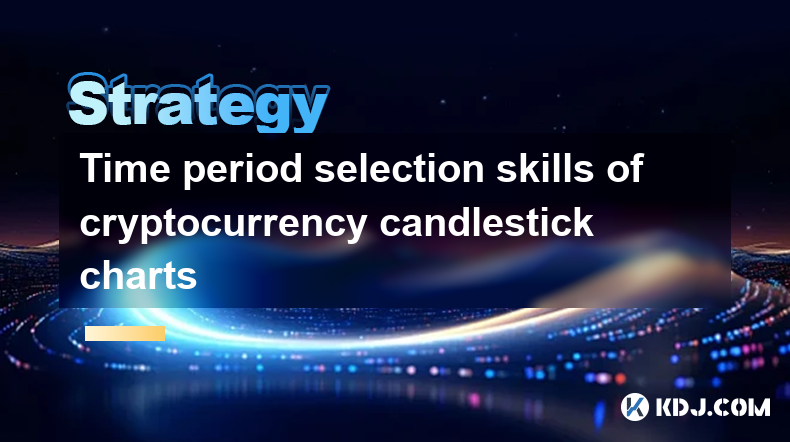
Understanding Timeframes in Cryptocurrency Candlestick Charts
Candlestick charts are a fundamental tool for technical analysis in the cryptocurrency market. The timeframe you choose significantly impacts your interpretation of price action. Selecting the right timeframe is crucial for effective trading and risk management. Different timeframes reveal different information, from short-term volatility to long-term trends. Choosing incorrectly can lead to missed opportunities or poor trading decisions. Understanding the nuances of timeframe selection is therefore essential for any cryptocurrency trader.
Short-Term Timeframes (1-minute to 4-hour)
Short-term timeframes, like 1-minute, 5-minute, 15-minute, and 1-hour charts, are ideal for scalping and day trading. They capture high-frequency price fluctuations, allowing traders to identify quick entry and exit points. However, these charts are also very noisy, with significant price swings due to short-term market sentiment. Traders using these timeframes need to be very disciplined and have a clear understanding of risk management. Over-trading is a common pitfall.
Intermediate Timeframes (4-hour to 1-day)
Intermediate timeframes, such as 4-hour and daily charts, provide a balance between short-term noise and long-term trends. They are suitable for swing trading, where positions are held for several days or weeks. These charts help identify potential breakouts and reversals, allowing traders to capitalize on medium-term price movements. They offer a clearer picture of price action compared to short-term charts, reducing the impact of random price fluctuations.
Long-Term Timeframes (1-week to 1-month)
Long-term timeframes, including weekly and monthly charts, are best for long-term investing and identifying major trends. These charts filter out short-term noise, providing a clearer view of the overall market direction. They are less useful for short-term trading decisions, but essential for understanding the broader context of price movements. Identifying long-term support and resistance levels is crucial for long-term strategies.
How to Choose the Right Timeframe
The optimal timeframe depends on your trading style, risk tolerance, and investment goals.
- Scalpers: Prefer very short timeframes (1-minute to 15-minutes).
- Day traders: Utilize short-term to intermediate timeframes (5-minutes to 4-hours).
- Swing traders: Focus on intermediate timeframes (4-hours to 1-day).
- Long-term investors: Employ long-term timeframes (weekly and monthly).
Analyzing Multiple Timeframes
Experienced traders often analyze multiple timeframes simultaneously. This approach, known as multi-timeframe analysis, allows for a more comprehensive understanding of price action. For example, a trader might use a daily chart to identify the overall trend and then use a 1-hour chart to find specific entry and exit points. This combination minimizes risk and maximizes potential profits.
Identifying Support and Resistance Levels Across Timeframes
Support and resistance levels are crucial in technical analysis. These levels are often more significant and reliable when identified across multiple timeframes. A support level that holds on a weekly chart is likely to provide stronger support on lower timeframes. Similarly, resistance levels identified on higher timeframes are more likely to be significant obstacles on lower timeframes.
Understanding the Relationship Between Timeframes
It's crucial to understand the relationship between different timeframes. A bullish trend on a weekly chart might be accompanied by short-term bearish corrections on lower timeframes. This is normal market behavior. Recognizing these relationships helps traders avoid impulsive decisions based on short-term noise. The longer the timeframe, the more significant the trend usually is.
The Importance of Patience and Discipline
Regardless of the chosen timeframe, patience and discipline are crucial for success. Avoid impulsive trades based on short-term price fluctuations. Stick to your trading plan and risk management strategy. Consistent application of your trading plan is key to long-term success in cryptocurrency trading.
Avoiding Over-Trading
Over-trading is a common mistake, particularly on short-term timeframes. It leads to increased transaction fees and emotional decision-making. Establishing a clear trading plan and sticking to it is crucial to avoid this pitfall. Taking breaks and stepping away from the charts is also beneficial for maintaining a clear and rational perspective.
Adapting Your Timeframe Selection
Market conditions are constantly changing. What works well in one market environment may not be suitable in another. Be prepared to adapt your timeframe selection based on market volatility and your trading goals. Flexibility is key to long-term success.
The Role of Indicators in Timeframe Selection
Technical indicators can enhance your analysis across different timeframes. However, it's crucial to remember that indicators are not perfect predictors of future price movements. Use them in conjunction with candlestick patterns and price action analysis for a more comprehensive approach.
Backtesting Your Strategy
Before implementing any trading strategy, it's essential to backtest it on historical data. This allows you to assess the effectiveness of your chosen timeframes and indicators under different market conditions. Backtesting helps refine your strategy and reduce potential risks.
Frequently Asked Questions
Q: Which timeframe is best for beginners?
A: For beginners, starting with daily or weekly charts is generally recommended. These timeframes provide a clearer picture of the overall trend and reduce the impact of short-term noise.
Q: Can I use multiple timeframes simultaneously?
A: Yes, multi-timeframe analysis is a common and effective technique. It helps to gain a more comprehensive understanding of price action by combining information from different timeframes.
Q: How do I identify support and resistance levels across different timeframes?
A: Look for areas where price has consistently bounced off or failed to break through on multiple timeframes. These areas often represent significant support and resistance levels.
Q: What is the best indicator to use with candlestick charts?
A: There's no single "best" indicator. The choice depends on your trading style and the information you're trying to extract. Many traders use a combination of indicators.
Q: How often should I check my charts?
A: The frequency depends on your chosen timeframe and trading style. Scalpers might check charts every few minutes, while long-term investors might only check them weekly or monthly. Avoid constantly monitoring charts, as this can lead to emotional decision-making.
Disclaimer:info@kdj.com
The information provided is not trading advice. kdj.com does not assume any responsibility for any investments made based on the information provided in this article. Cryptocurrencies are highly volatile and it is highly recommended that you invest with caution after thorough research!
If you believe that the content used on this website infringes your copyright, please contact us immediately (info@kdj.com) and we will delete it promptly.
- Gold Dips from Record High as Market Turmoil Sparks Profit-Taking
- 2025-04-04 08:35:12
- Factors such as whale accumulation, bullish technical indicators, and market sentiment have contributed to this optimistic outlook.
- 2025-04-04 08:35:12
- With the crypto market entering a new growth cycle in 2025
- 2025-04-04 08:30:11
- EOS Price Defies the Market Crash: +46% in a Week!
- 2025-04-04 08:30:11
- BlockDAG (BDAG) Breaks Records With 2,380% Presale Price Jump, Outpacing Dogecoin (DOGE) and Kaspa (KAS)
- 2025-04-04 08:25:12
- Economic uncertainty and a major crypto exchange hack pushed down the total value locked in DeFi protocols to $156 billion in the first quarter of 2025
- 2025-04-04 08:25:12
Related knowledge
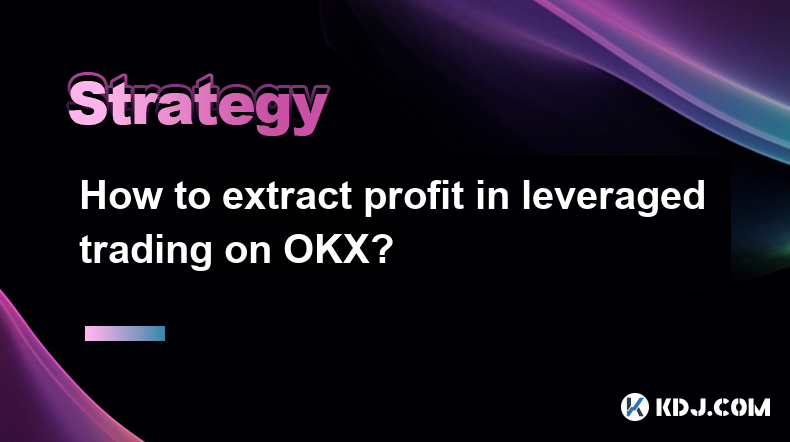
How to extract profit in leveraged trading on OKX?
Apr 04,2025 at 05:42am
Leveraged trading on OKX can be a powerful tool for traders looking to amplify their potential profits. However, it also comes with increased risk, making it essential to understand how to effectively extract profit from these trades. This article will guide you through the process of leveraging OKX's platform to maximize your gains while managing the i...
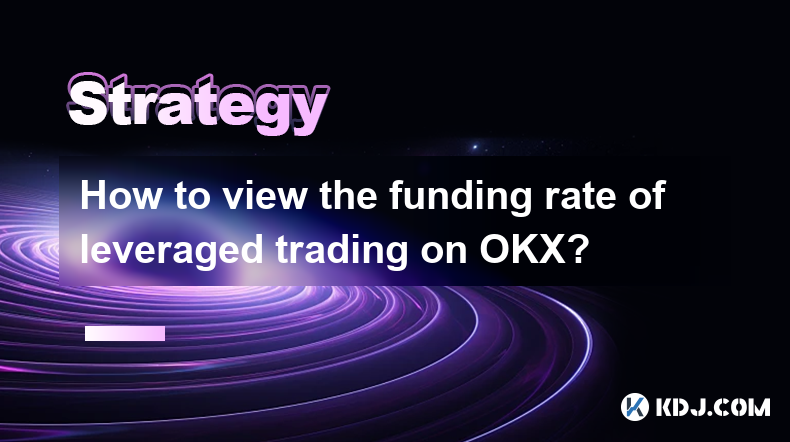
How to view the funding rate of leveraged trading on OKX?
Apr 04,2025 at 07:07am
Understanding the funding rate is crucial for anyone involved in leveraged trading on OKX. The funding rate is a mechanism used in perpetual futures contracts to ensure that the market price of the futures remains closely aligned with the spot price of the underlying asset. This article will guide you through the process of viewing the funding rate on O...

How to use the three crows candlestick combination to determine the market top?
Apr 03,2025 at 03:18pm
Three Black Crows are a classic K-line combination form that is often used to judge the top of the market in technical analysis. This pattern consists of three consecutive negative lines, the opening price of each negative line is within the entity of the previous K-line, and the closing price gradually decreases. This pattern usually appears at the end...
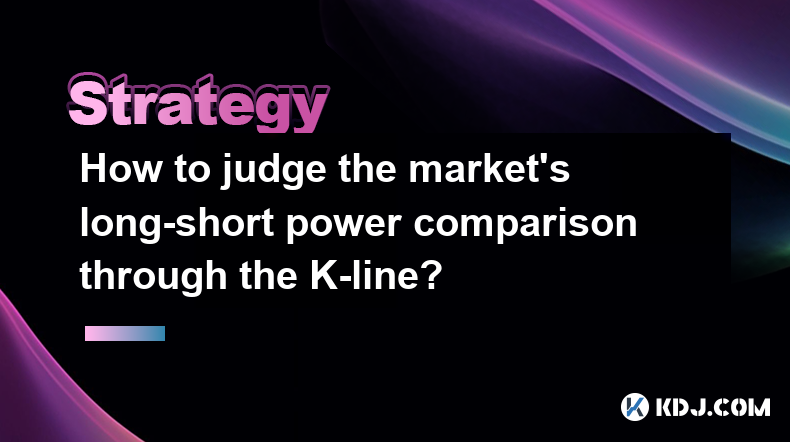
How to judge the market's long-short power comparison through the K-line?
Apr 03,2025 at 02:39pm
Judging the market's long-short power comparison through the K-line is an important skill in technical analysis. The K-line chart can not only show price changes, but also reflect the emotions and power comparison of market participants. This article will introduce in detail how to judge the market's long-short power comparison through K-lines. ...
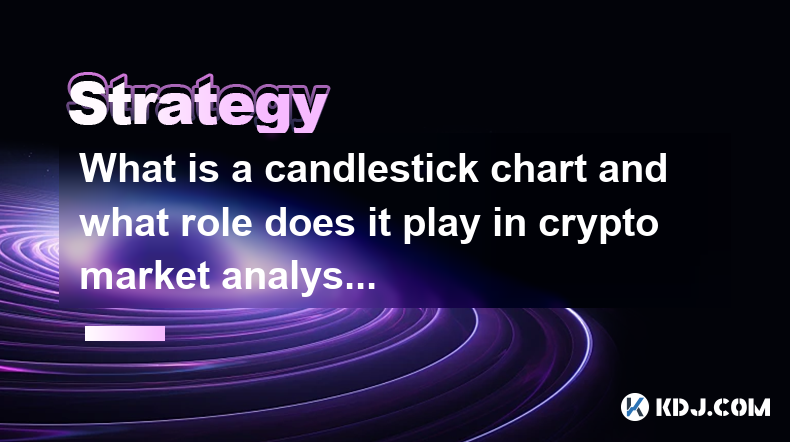
What is a candlestick chart and what role does it play in crypto market analysis?
Apr 03,2025 at 02:26pm
K-line chart, also known as candle chart, is a form of chart used to display changes in the price of financial products. In the cryptocurrency market, K-line charts are widely used to analyze the price trends of digital assets such as Bitcoin and Ethereum. This article will introduce in detail the basic structure, types of K-line charts and their specif...
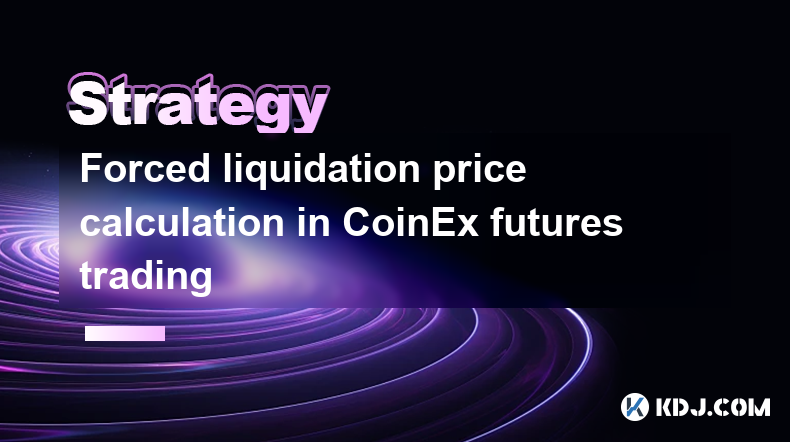
Forced liquidation price calculation in CoinEx futures trading
Apr 03,2025 at 05:35am
In CoinEx futures trading, understanding the forced liquidation price is crucial for managing risk and maintaining your positions. The forced liquidation price is the point at which your position is automatically closed to prevent further losses. This mechanism is designed to protect both the trader and the platform from negative account balances. The c...

How to extract profit in leveraged trading on OKX?
Apr 04,2025 at 05:42am
Leveraged trading on OKX can be a powerful tool for traders looking to amplify their potential profits. However, it also comes with increased risk, making it essential to understand how to effectively extract profit from these trades. This article will guide you through the process of leveraging OKX's platform to maximize your gains while managing the i...

How to view the funding rate of leveraged trading on OKX?
Apr 04,2025 at 07:07am
Understanding the funding rate is crucial for anyone involved in leveraged trading on OKX. The funding rate is a mechanism used in perpetual futures contracts to ensure that the market price of the futures remains closely aligned with the spot price of the underlying asset. This article will guide you through the process of viewing the funding rate on O...

How to use the three crows candlestick combination to determine the market top?
Apr 03,2025 at 03:18pm
Three Black Crows are a classic K-line combination form that is often used to judge the top of the market in technical analysis. This pattern consists of three consecutive negative lines, the opening price of each negative line is within the entity of the previous K-line, and the closing price gradually decreases. This pattern usually appears at the end...

How to judge the market's long-short power comparison through the K-line?
Apr 03,2025 at 02:39pm
Judging the market's long-short power comparison through the K-line is an important skill in technical analysis. The K-line chart can not only show price changes, but also reflect the emotions and power comparison of market participants. This article will introduce in detail how to judge the market's long-short power comparison through K-lines. ...

What is a candlestick chart and what role does it play in crypto market analysis?
Apr 03,2025 at 02:26pm
K-line chart, also known as candle chart, is a form of chart used to display changes in the price of financial products. In the cryptocurrency market, K-line charts are widely used to analyze the price trends of digital assets such as Bitcoin and Ethereum. This article will introduce in detail the basic structure, types of K-line charts and their specif...

Forced liquidation price calculation in CoinEx futures trading
Apr 03,2025 at 05:35am
In CoinEx futures trading, understanding the forced liquidation price is crucial for managing risk and maintaining your positions. The forced liquidation price is the point at which your position is automatically closed to prevent further losses. This mechanism is designed to protect both the trader and the platform from negative account balances. The c...
See all articles






















































































